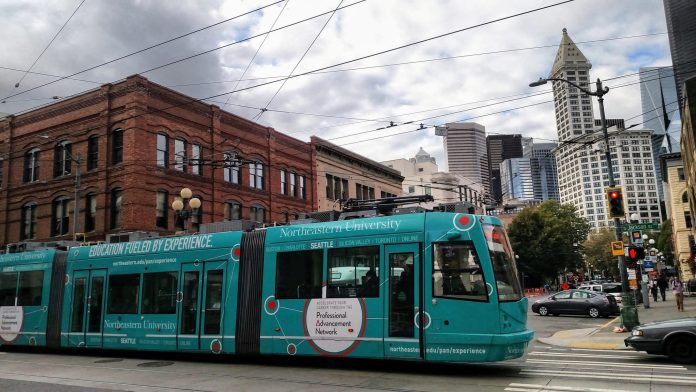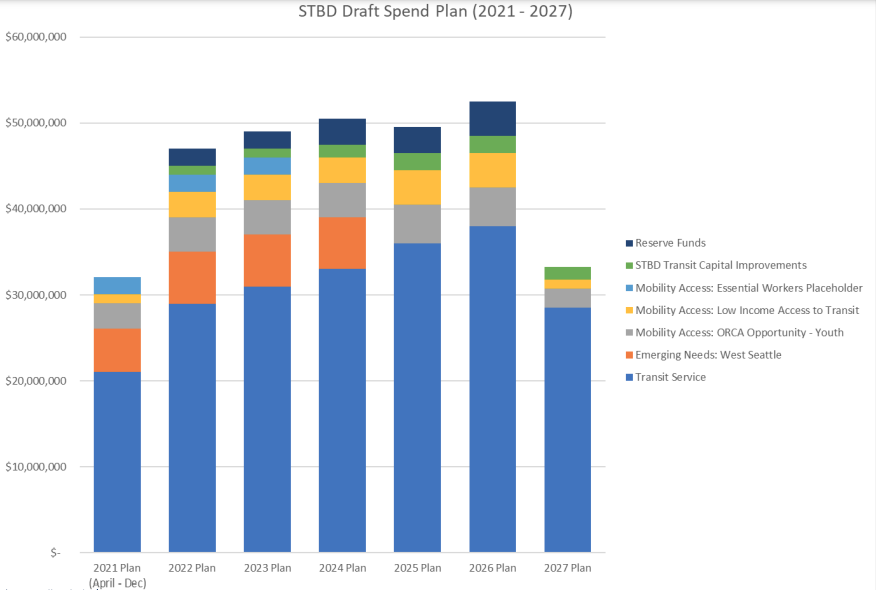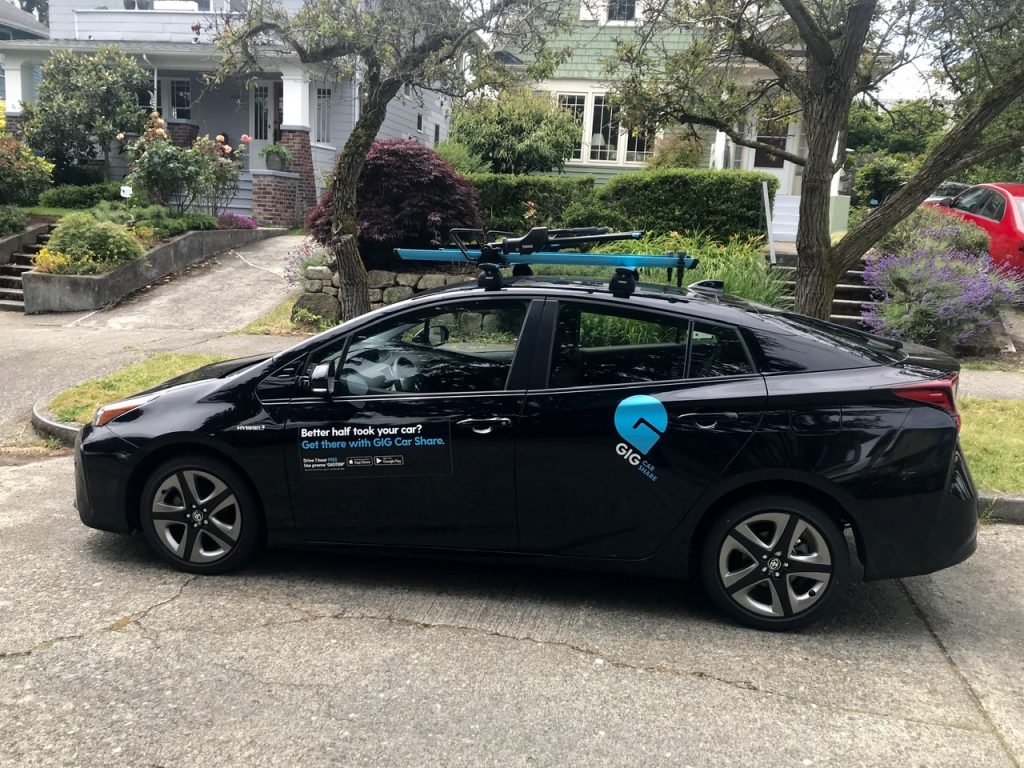
A discussion on possible changes to Mayor Durkan’s proposed budget for the Seattle Department of Transportation (SDOT) was dominated Friday by further relitigating of the case for finally connecting Seattle’s two existing streetcar lines. Effectively on pause since 2018, the Center City Connector has been in development since the McGinn administration.
When Mayor Durkan took office, work was halted on the project even as construction had begun on utility work, and an independent analysis was conducted due to concerns about escalating costs. But in 2019, after that study had been completed and the total cost for the project was pegged at $286 million, up from $177 million, the Mayor announced she was supporting the project and the city council authorized $9 million to continue design work. However, Durkan was clear it would be the city council who would have to come up with funding to fill what was an estimated $65 million gap in funding. In 2020, facing revenue impacts due to Covid-19, $8 million of that initial design funding was diverted to other purposes.
Now Durkan’s 2022 budget proposes spending $2.4 million. That would get the project back up-to-date, and on the same page as current work on another downtown transit tunnel being planned as part of Sound Transit 3. This $2.4 million would make up the lion’s share of the anticipated 2022 proceeds directed to transportation from Seattle’s ridehailing fee on Transportation Network Companies (TNCs).
In 2019, there was only one vote on the City Council against funding the streetcar project: Councilmember Lisa Herbold. Now Herbold has another outspoken critic of the project to join with, Councilmember Alex Pedersen. On Friday, both Herbold and Pedersen made clear they would like to direct that $2.4 million to other purposes. Pedersen attacked the project as being “redundant” because there are additional public transit lines in Downtown Seattle. Herbold jumped on that talking point as well, but primarily focused on the fact that SDOT would have to get back into the queue for the $75 million in Federal grant funding that it had been in line to receive before the project was paused.
Defending the project was Council President Lorena González, who actually agreed with her council colleagues that the route was redundant, and noted the virtue of this fact. “Literature in the area of transportation repeatedly says redundancy should be a feature,” she told them, citing the need for alternatives if there’s a failure somewhere in the system. González was interested in getting more information on the status of possible grants for the project, but wanted to be clear that doing due diligence around the financial needs for the project was separate from the vision for a transit network that the city has.
It’s unclear yet if there are more than just two votes on the council to propose diverting the funding, which would likely put the project back on ice. Councilmember Andrew Lewis, who represents the district where the streetcar would be built, didn’t make his views known during Friday’s meeting. During his bid to be District 7’s representative in 2019, he told The Urbanist that he didn’t support the Center City Connector, and also viewed the service it would provide as redundant. However, he said he wouldn’t actively oppose the project.
“I fully acknowledge that the decision has been made after several studies, delays, and debates to build the Center City Connector,” he wrote in response to a question from The Urbanist’s election board. “I respect that process and the decision, and I will not seek to relitigate the Center City Connector if I am elected to the city council. I will make sure the process continues to be transparent and will work to make sure it is effectively and efficiently implemented.”
In contrast, Councilmember Dan Strauss told The Urbanist that he does support the project. “When we build out a transit mode into an interconnected network, it becomes more useful and encourages greater ridership,” he wrote in 2019. It doesn’t appear likely that the votes are there on the committee to divert the funding, but dynamics could change.
The Urbanist has extensively covered the Center City Connector, including making the full case for the transit project in 2018.
Could Seattle purchase additional bus service?
A topic raised by Councilmember Pedersen was the issue of bus service hours purchased from Metro via the Seattle Transportation Benefit District (STBD). In 2022, the City is set to spend $28.5 million on bus service hours, not counting additional bus service around West Seattle to mitigate the bridge closure. This is purchasing around 150,000 service hours, or around 20% of all service hours that King County Metro is currently providing. But the STBD funding still resulted in some deleted trips in the October service change even as Metro restored trips elsewhere.
A memo by council central staff notes that $17 million is currently being held in reserves, and Pedersen wanted to know if the reserves could be used to bolster service levels. The reserves are kept on hand to account for future increase in per-hour service costs, and could be needed in the event that voters didn’t approve a renewal of the STBD before it expired in 2027.
Pedersen raised the idea of a possible countywide measure being sent to voters in the next few years, with a Seattle-only renewal as a fallback option, and suggested that the idea that the city would end up without a benefit district at all was a long shot. “I would hate to hold back on service now when there’s such demand, and having that intense frequency of buses is what will get people to consider getting out of their cars,” Pedersen said.
The spending plan for the STBD does include bolstering reserve funding every year with the exception of the final partial year in 2027.

Not mentioned was the possibility of adding additional money from reserves to increase the amount being spent on capital improvements to speed up bus operations. Capital projects aren’t ongoing expenses that would have to be sustained through the next ballot measure, but could provide faster trips that benefit riders moving forward.
King County’s proposed budget would get Metro back to 100% of pre-pandemic service levels by the end of 2022, and cancel a service reduction that had previously been anticipated in 2025, but no increases in countywide service levels have been proposed yet.
Council President González also asked Central Staff to come back with more analysis of what service levels could be sustained with reserve funds that don’t conflict with the goals of the reserve fund.
Changes to free-floating car share?
Along with the budget, the Durkan administration is sending the city council a companion piece of legislation that would modify the way that the city’s permits for free-floating car share operate. Currently permits include a $300 per vehicle base fee, and additional fees are charged every time the vehicle is parked. This would change that to a fee for every trip, with a proposed $0.50 per trip fee cut in half for vehicles that are electric.
Council Central Staff notes that this would generate $150,000 less in revenue for the city next year. But perhaps more significantly, the legislation would alter the requirements for serving specific geographic areas in the city. Currently, every company permitted to provide free-floating car share must expand their service area within two years to cover the entire city. This would be modified to allow SDOT to grant exceptions, based on characteristics like fleet size, breadth of service, and strategies for providing service in underserved communities.
Just a few years ago, the city had three companies operating car share, with nearly 2,000 vehicles on the streets. Currently, Seattle only has one free-floating car share company, GIG, which has a little under 400 cars on the city’s streets right now. Next year, GIG would be required to serve the entire city under the existing terms of the city’s permit, which seems like the impetus for this change.
Several councilmembers expressed concern about the change in geographic service requirement. When Car2Go launched in 2013, there was much criticism of the fact that the company decided to restrict its cars from being parked in most of the Rainier Valley and all of West Seattle, while it allowed cars to be parked nearly to the northern border of the city. Of course, serving the entire city does not ensure that those areas are actually served.
“I am concerned about creating this discretion, because I do think it will create pretty significant inequities,” Council President González said, noting that she didn’t think it was a good deal to Seattle residents to be both reducing the permit fees and the coverage requirements at the same time. Councilmember Tammy Morales wanted more information on whether the citywide coverage requirement led to the decision of the operators to leave.
Lower permit fees could entice more car share operators to start service in Seattle, but it’s pretty clear that permitting a carshare company that wouldn’t serve all Seattle residents would likely be a non-starter for several councilmembers.
These issues are certainly not going to be the only place where councilmembers seek to modify the transportation budget: next week the budget committee will review a full list of proposed amendments and we’ll see how much support each one has. Expect to see increases in the Commercial Parking tax from Councilmember Lewis to pay for Vision Zero programs, a proposal to see more Home Zones in Seattle from Councilmember Morales, and a likely proposal to increase bridge maintenance funding from Councilmember Pedersen.
Ryan Packer has been writing for The Urbanist since 2015, and currently reports full-time as Contributing Editor. Their beats are transportation, land use, public space, traffic safety, and obscure community meetings. Packer has also reported for other regional outlets including Capitol Hill Seattle, BikePortland, Seattle Met, and PubliCola. They live in the Capitol Hill neighborhood of Seattle.



